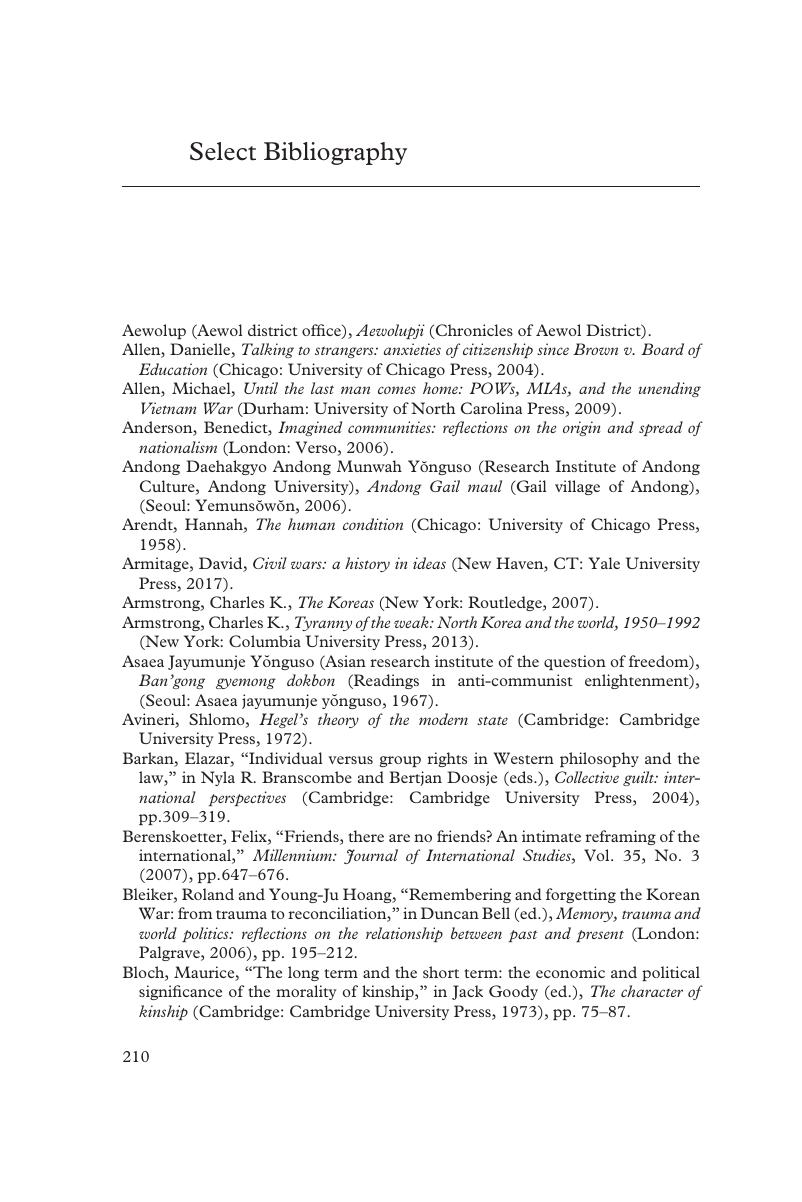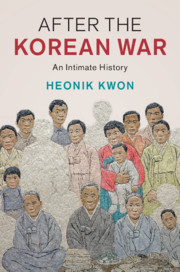Book contents
- After the Korean War
- Studies in the Social and Cultural History of Modern Warfare
- After the Korean War
- Copyright page
- Contents
- Acknowledgments
- Introduction
- 1 Massacres in Korea
- 2 Bad Gemeinschaft
- 3 Peace in the Feud
- 4 Guilt by Association
- 5 Morality and Ideology
- 6 The Quiet Revolution
- Conclusion
- Notes
- Select Bibliography
- Index
- References
Select Bibliography
Published online by Cambridge University Press: 21 March 2020
- After the Korean War
- Studies in the Social and Cultural History of Modern Warfare
- After the Korean War
- Copyright page
- Contents
- Acknowledgments
- Introduction
- 1 Massacres in Korea
- 2 Bad Gemeinschaft
- 3 Peace in the Feud
- 4 Guilt by Association
- 5 Morality and Ideology
- 6 The Quiet Revolution
- Conclusion
- Notes
- Select Bibliography
- Index
- References
Summary

- Type
- Chapter
- Information
- After the Korean WarAn Intimate History, pp. 210 - 222Publisher: Cambridge University PressPrint publication year: 2020
References
Select Bibliography
Daegu Maeil Sinmun (Daegu Daily Gazette), July 10, 1950.
Daegu Maeil Sinmun (Daegu Daily Gazette), May 27, 1960.
Daegu Maeil Sinmun (Daegu Daily Gazette), June 16, 1960.
Daegu Maeil Sinmun (Daegu Daily Gazette), July 29, 1960.
Hankuk Ilbo (Korea Daily), December 8, 1961.
Jindotaimjŭ (Jindo Times), June 26, 2009.
Kŭmsugangsan, 10 (1990).
Kyunghyang Sinmun (Kyunghyang Daily), November 15, 2009.
Mal (Parole), March 2000.



